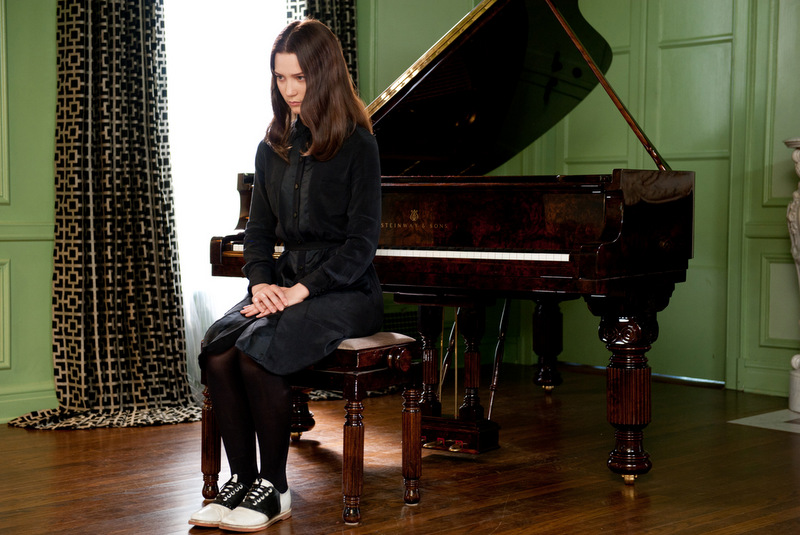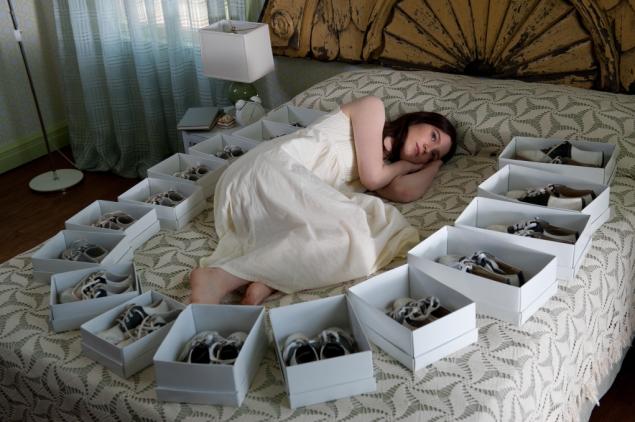|
The mystery of Stoker doesn't lead us to
a climatic
revealing point but dumps its revelation onto us as grisly as several
of its
gruesome murders. The setup is intriguing but the film is unbalanced by
the
self-indulgent gaze it holds over its perpetually stylised art design.
A coming
of age story and a family conspiracy of Hitchcockian proportions runs
second to
an arts show of strange and beautiful but thematically opaque imagery.
The film
is intriguing for the many reasons that hinder its script but it is
also
emotionally detached and its violence seems unnecessary,
inconsequential and
increasingly sadistic.
Korean filmmaker Park
Chan-wook is regularly intrigued by violence in films, having made the Vengeance trilogy, which included the
hauntingly mysterious Oldboy. This is
also the first film that Park has made in America and in English,
courtesy of a
first time script by Prison Break star
Wentworth Miller. Miller has said that Hitchock's film Shadow
of a Doubt was his inspiration for the film, which is
fitting because Park cites Vertigo as
the film that made him want to become a director. The disappointment
then of
calling the film insubstantial stems not only because of aspiring
influences
but the script's personal clout as part of the 2010 Hollywood Black
List of the
best unproduced screenplays. Perhaps a cultural division stopped the
film from
reaching the full potential because at times it evokes an outsider,
looking at
an American family inside a vacuum of time and space.

Hitchcock's Shadow of a Doubt was about
a man named
Charlie who was on the run for ambiguous and sinister reasons and then
attempted to hide within his own family. His relationship with his
niece caused
his motives to come unstuck. The premise is similar here. India Stoker
(Mia
Wasikowska) is an alarmingly remote girl, grieving from her father who
has died
in a car accident. She has a brittle relationship with her mother
Evelyn
(Nicole Kidman) and becomes even more detached when her uncle Charlie
(Matthew
Goode), her father's brother, insists on staying at the house. Spying
on her
uncle, she notices that he and Evelyn are growing more intimate. This
is
in-between the brief arrival of Aunt Gwendolyn (Jacki Weaver). After
Charlie
begins to follow India, they being to grow closer together, leading to
some
violent actions against some kids bullying India.
Chan-wook is a great
visual stylist but his persistence to inject his stylistic imprint onto
the
film hinders the narrative. The film is gothic in both mood and form.
The
colouring is selectively muted, pushing clashing white and brown tones
into the
frame. The colour filtering inflicts a cold and immobile emotional
state over
India as she grieves. The conservative and low-key stylisation of her
clothes
also encapsulates her in a stasis of timelessness where she is not an
adult but
no longer a child. "To be adult is to be free," says her voice-over
in the film's opening. The colour is conceivably a reflection of her
inability
to connect emotionally with people on an adult level and make choices
for
herself.

It's Chan-wook's
lingering camera and the specificity of the images that gets the better
of him.
The film is over-directed and heavy-handed. There are close-ups of
shoes,
pencils, blood and spiders crawling up India's leg and the sound
effects of a
clock are deliberately amplified. Combined with strange narrative
details, like
India receiving her birthday presents in a tree, the stylisation's
purpose
seems solely to impede rather than reveal the film's wafer thin plot
until the
final quarter. The narrative is maddeningly cryptic and light on
insight,
particular when the characters posses few signs of an inner life.
Nicole
Kidman's Evelyn has no backstory, which limits her panting, breathless
performance to only fire late during a gripping monologue. Jackie
Weaver's
inclusion lack distinction, an underwritten role that is as brisk as
the film's
desire for murder.
With a character
that is intentionally disconnected Mia Wasikowska has a visible
intensity
inside her character, but India seems emotionally inexpressive. Her
character's
arc is an extension of brutal and violent horror than of psychological
growth.
The film suggests that her increasingly violent behaviour is equivalent
to a
sexual awakening, as shown through the juxtaposition of a shower scene
with the
flashback of a murder. In reality, the film is about a girl who breaks
from her
family to become a more violent individual against cartoon bullies from
a bygone
era, and then an undeserving final target. When the director cuts to a
flower
covered in blood at the end of the film I saw the blood but not the
beauty or
the growth.
|